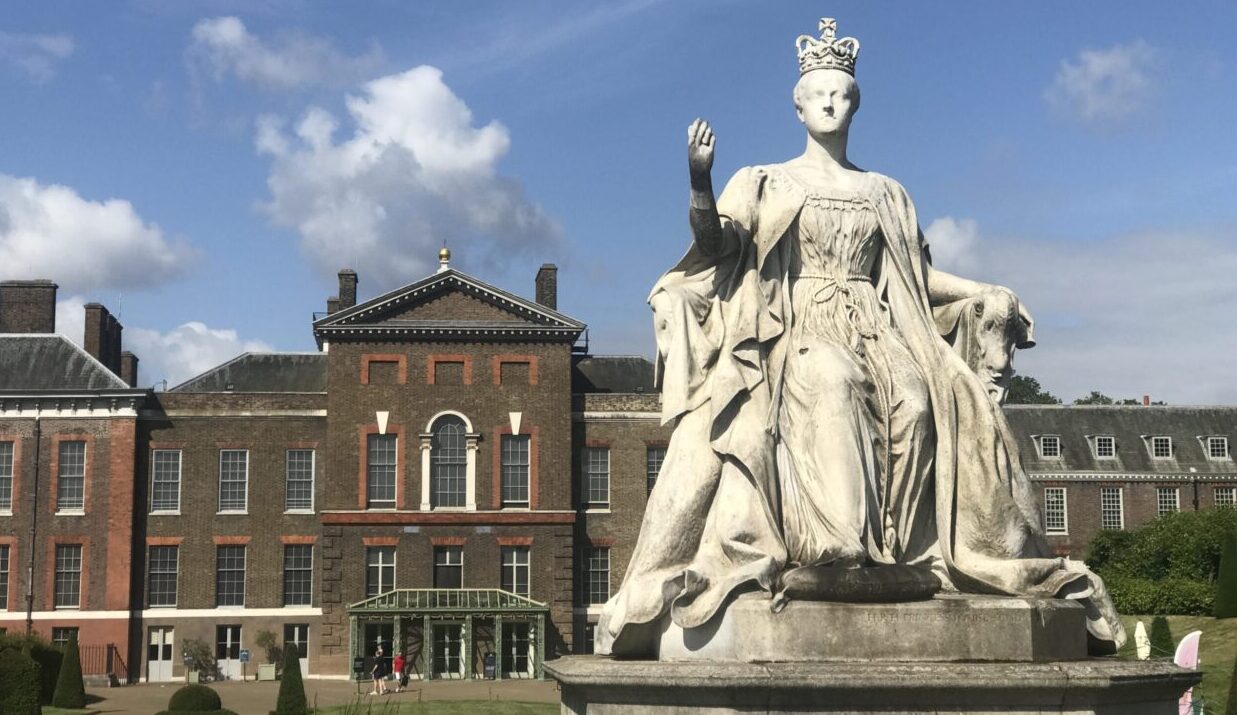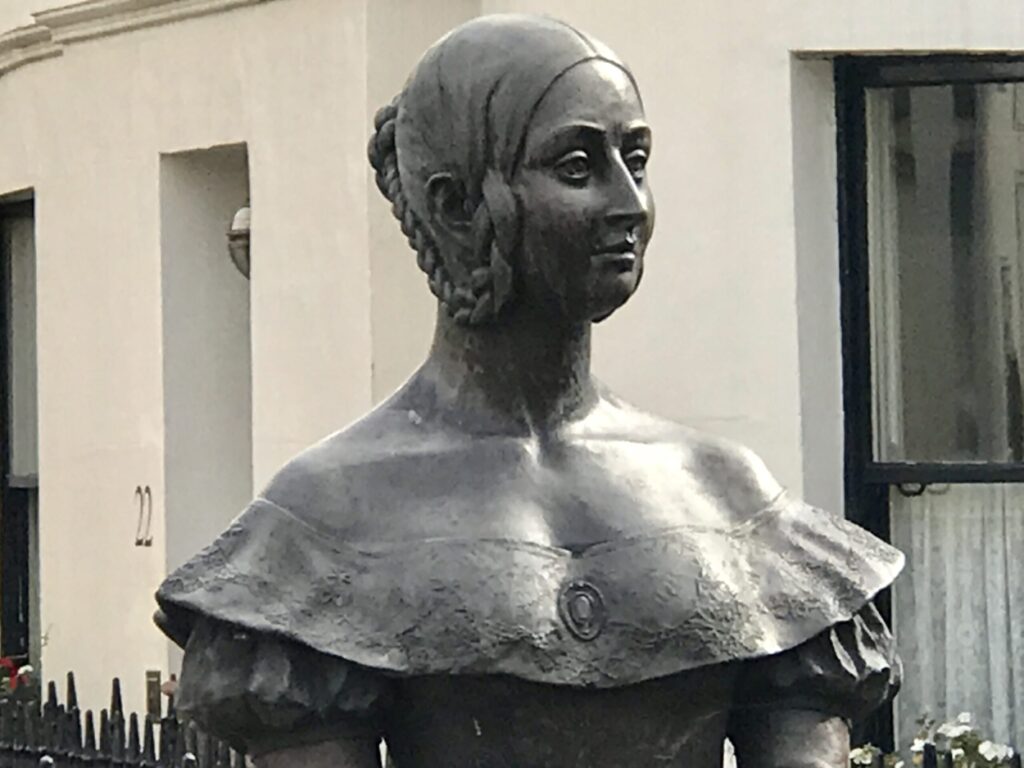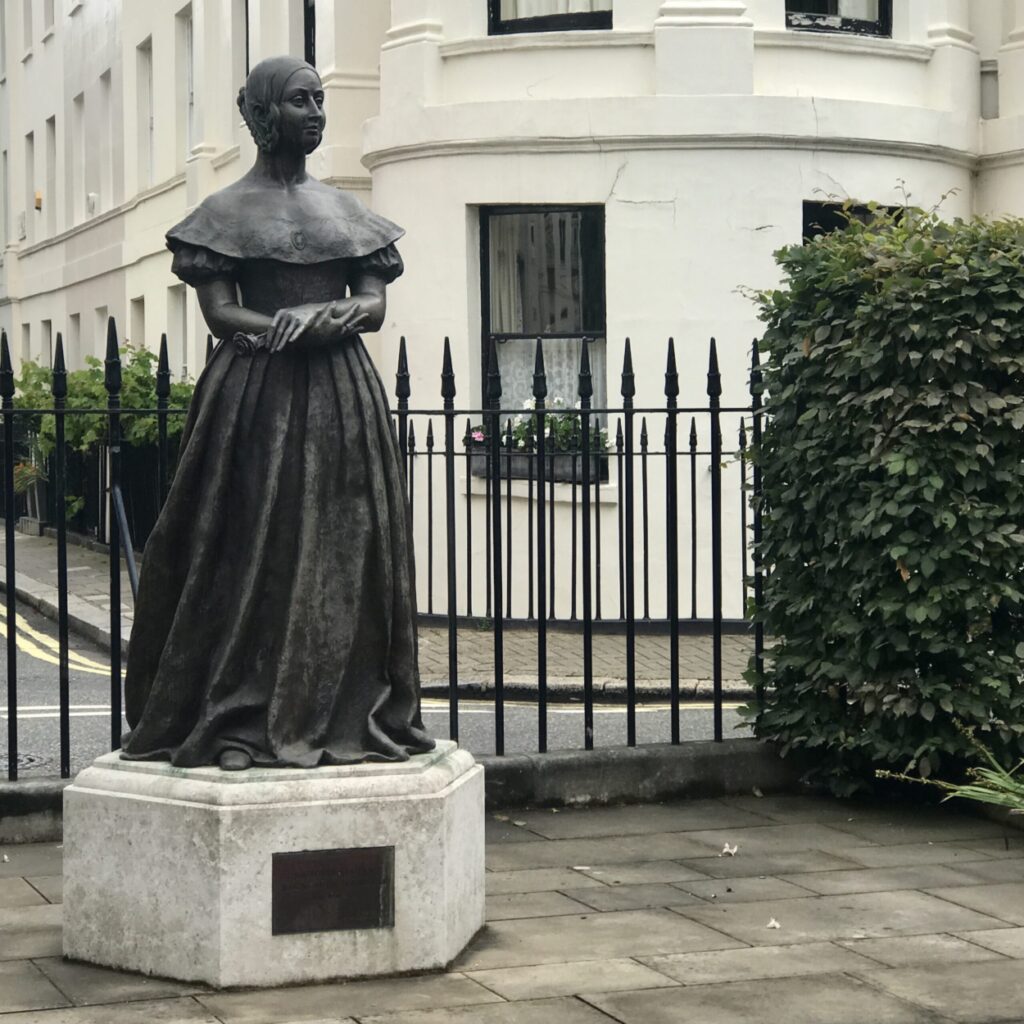
If I say “Queen Victoria” I’m guessing that the picture in your head is of the late-age monarch, ‘we are not amused’-era, dressed in mourning black; the old, short, rotund, queen empress.
This version of the ‘old queen’ is perhaps most famously seen on Sir Thomas Brock’s Victoria Memorial in front of Buckingham Palace. Unveiled in 1911 by her grandson Geroge V with another grandson, Kaiser Wilhelm of Germany, in attendance), she stares sternly down The Mall, the marble embodiment of the Empire that would last the ages (spoiler alert: it didn’t).
In similar fashion, the statue of the queen by the Brixton-born Charles Bell Birch at the City end of Blackfriars Bridge is very commanding, almost ordering us mere subjects to kneel before the imperial presence.
In contrast to those images, let’s look at a couple of statues of the young Victoria.
The first stands, appropriately enough, in Victoria Square, off Lower Grosvenor Place in SW1. The square was built in the early years of the queen’s reign (and so named in her honour) by the Grosvenor Estate, well before the building of Victoria Street and the railway station.
One of the entrances to the square (which used to be called Albert Street) has sight of the back of the Royal Mews at Buckingham Palace, and it is down this street that the statue of the young queen looks.
This is a modern sculpture (2007) by the artist Catherine Anne Laugel who modelled the likeness on contemporary drawings and paintings.
But probably the most famous statue of the teenage Victoria is the one outside Kensington Palace.
It was here that the Princess Victoria was born on 24 May 1819, to the Duke of Kent, younger brother of George IV and William IV, and the Princess Victoria fo Saxe-Cobury-Saalfeld. It was also at Kensington Palace that she was woken In the early hours of 20 June 1837 to be told that her uncle had died and that she was now queen.
The statue was to commemorate the 1887 Golden Jubilee of the queen, and shows the 18 year old Victoria in her coronation robes.
The artist of this piece was Victoria’s own daughter Princess Louise, who was living at Kensington Palace at the time, and sculpted the statue at her studio there. During the Second World War the nose of the statue was damaged (it was replaced in 1952), and in 2019 a man with a hammer removed the queen’s sceptre.


